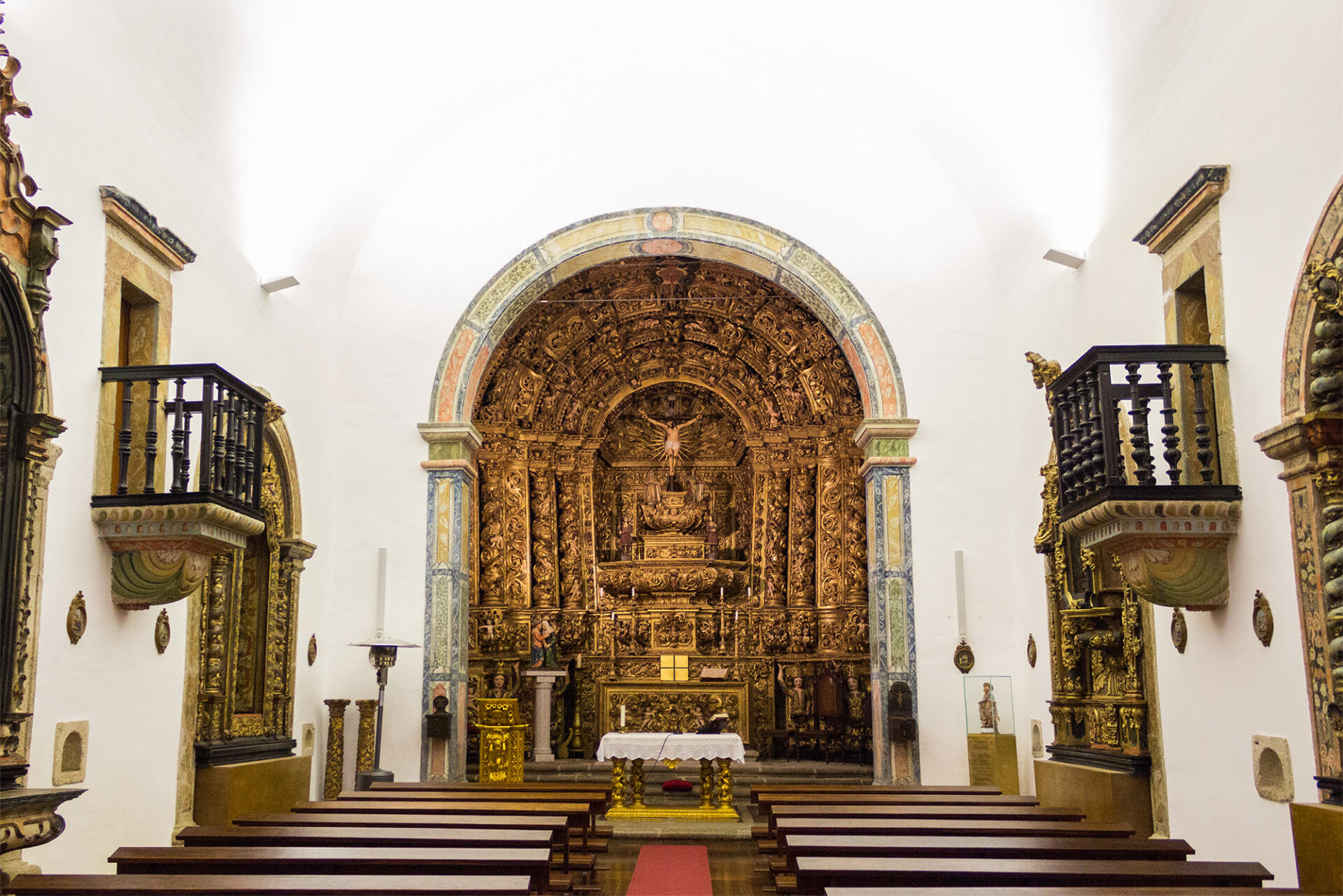The Church of Mercy of Mirandela is located in the old part of Mirandela and its construction dates back to the end of the 17th century, in a mannerist style. Ernesto de Sales (1950, I: 241) states that in 1518 the Casa da Misericordia was founded in Mirandela, and the first temple was built at that time, in Calle da Ponte (today Calle Luciano Cordeiro).
The plan is composed of two rectangular volumes, the nave and the main chapel, the latter being smaller in size. The main façade is divided into three registers with three different panels. In the first register three doors with rectangular frames were opened, the side ones topped by semicircular pediments, the central one by volutes.
In the second register there is a central window flanked by two niches dug into the thickness of the wall, with the image of the founders of the Order of the Holy Trinity, Saint John of Matha and Saint Felix of Valois. The entire frontispiece is topped by a pediment with pinnacles in the centre of which a Pietà was placed.
The single nave has two carved and polychrome stone pulpits, and four side altarpieces, two on the evangelical side dedicated to Our Lord of the Steps and Our Lady of the Rosary, and on the opposite side, the altarpiece of Sr. de Cana Verde and Our Lady of Prazeres.
The altarpiece of Nª Srª dos Prazeres and its image come from the original chapel of the Paço dos Távoras when it was completely abandoned after the misfortune suffered by the Távoras, accused of attempted regicide, in 1758 and later demolished when they opened the street of the Távoras for the construction of the Palace of Justice.
The triumphal arch, perfectly round, made of granite stone, with mural painting, has phytomorphic and marble motifs flanking a representation of Christ and the flag of Mercy.
The main chapel is covered by a vault of gilded coffers, and the walls are decorated with mural painting compositions, which reproduce ashlar tiles and marble panels.
In the centre a gilded altarpiece from the beginning of the 18th century was built, with a tribune and throne, all made of gold, with a very elaborate relief, in chestnut wood, in the Baroque style.
This altar was most likely built and donated by the Marquis António Luís de Távora, given the influence of such nobles, with the court, with several members of the family who were suppliers and brothers of the Santa Casa da Misericórdia de Mirandela, at great costs that the Santa Casa could never assume and also because at the same time this marquis, who made Paço dos Távoras de Mirandela his main residence, was commissioned to build the new façade of Paço dos Távoras, also in Baroque style. This altar was also designed by the court architect João Antunes. Among other altars that he designed in various churches of the time, the main altars of the Church of the Sanctuary of Bom Jesus in Cruz de Barcelos and the Convento dos Cardães in Lisbon stand out by analogy.
In the last two years of 2015 and 2016, the Church was the subject of considerable and important restoration works, under the responsibility and direction of the architect António Figueiredo (Mirandelense).
It was classified as a Property of Public Interest in 1986.

 Mirandela, Northern Portugal
Mirandela, Northern Portugal









